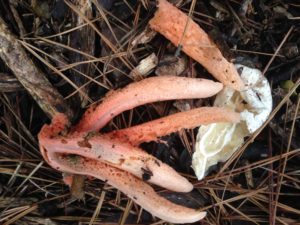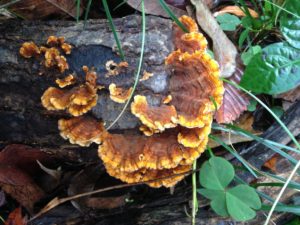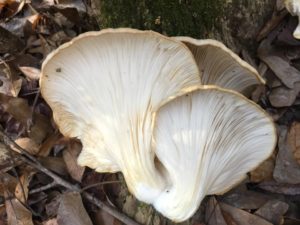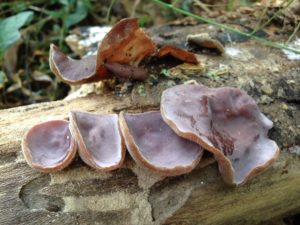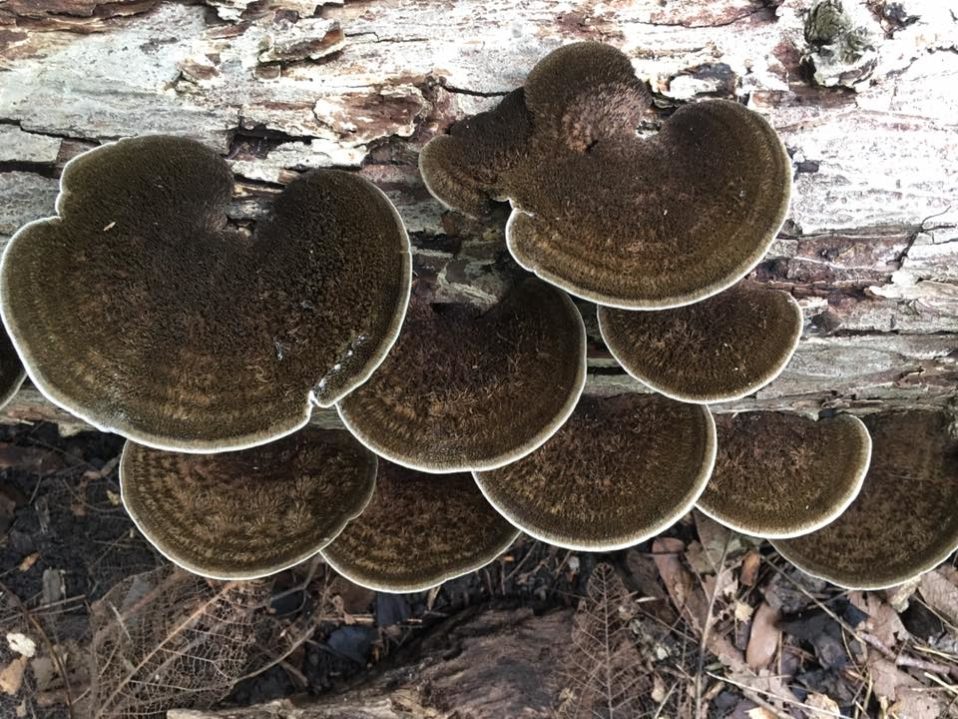Winter Mushrooms Are a Delight in the Cold of Winter
Winter is a time when a lot of local wildlife goes away or goes dormant. The reptiles and amphibians go into brumation (the cold-blooded version of hibernation). The wildflowers die back, and many of the trees have lost their leaves. Many of the birds have migrated through and left for warmer climes. However, not everything has gone away. If you walk through your local park or woodland, you may find mushrooms still offering you a burst of color here and there, even in the coldest part of winter. This month, we’ll have a look at a few common local mushrooms willing to show up in February.
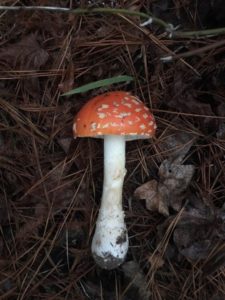 The bright red Fly Agaric (Amanita muscaria) is perhaps the most iconic of mushrooms. Ask a lot of people to draw a mushroom, and this is the species that may come to mind, though not everyone may know the name. This mushroom is famously hallucinogenic, but can also be somewhat toxic (so I would avoid consuming it). The name comes from the old practice of using this mushroom to ward off flies. Fly agarics are symbiotic with pine trees, and have a wide range across the Northern Hemisphere. One of the varieties that grows in our Texas pine forests may be a pale yellow.
The bright red Fly Agaric (Amanita muscaria) is perhaps the most iconic of mushrooms. Ask a lot of people to draw a mushroom, and this is the species that may come to mind, though not everyone may know the name. This mushroom is famously hallucinogenic, but can also be somewhat toxic (so I would avoid consuming it). The name comes from the old practice of using this mushroom to ward off flies. Fly agarics are symbiotic with pine trees, and have a wide range across the Northern Hemisphere. One of the varieties that grows in our Texas pine forests may be a pale yellow.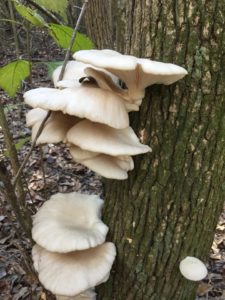
One of our more conspicuous edible mushrooms is the well-known Oyster Mushroom (Pleurotus ostreatus), which can sometimes be found in supermarkets. Unlike the fly agaric, which grows out of the soil, Oyster mushrooms grow out of dead wood, usually hardwood stumps and logs. The mushrooms is only the” fruiting” reproductive body of the fungus. The rest of the fungus lives inside the wood, feeding and growing. As with most edible mushrooms, you should be very careful before eating mushrooms from the wild though, only doing so if you are expert at mushroom identification, as the Oyster Mushroom has some toxic look-alikes.
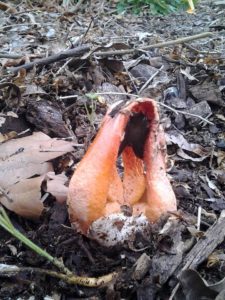 A rather strange looking mushroom that may pop up in your yard is the Columnar Stinkhorn (Linderia columnatus). They usually grow from soil with a lot of dead organic matter or hardwood mulch, so they’re usually seen in flower and landscaping beds. Besides the distinctive white egg like structure from which they seem to emerge, the spongy orange squid like tentacles, joined at the top, are rather unique. When the mushroom forms its slimy dark green spore mass inside the columnar arms, it takes on a nasty odor, reminiscent of feces and rotting carcass. The various species of stinkhorn fungi (ie. Columnar, Lattice, and stinky squid) attract flies with these odors to spread their spores to new locations.
A rather strange looking mushroom that may pop up in your yard is the Columnar Stinkhorn (Linderia columnatus). They usually grow from soil with a lot of dead organic matter or hardwood mulch, so they’re usually seen in flower and landscaping beds. Besides the distinctive white egg like structure from which they seem to emerge, the spongy orange squid like tentacles, joined at the top, are rather unique. When the mushroom forms its slimy dark green spore mass inside the columnar arms, it takes on a nasty odor, reminiscent of feces and rotting carcass. The various species of stinkhorn fungi (ie. Columnar, Lattice, and stinky squid) attract flies with these odors to spread their spores to new locations.
While mushrooms may not be as dynamic as blue jays, nor as showy as a field of bluebonnets, they are beautiful and fascinating, none the less. If you get a chance, get outside into your garden or nearby park or nature center and see what you can find growing on logs, on lawns, out of mulch beds, and tree stumps. You may be pleasantly surprised. And head into the park, so see how many you can find out on the trails!
Thanks for joining us, see you again next month!
Eric Duran
Staff Naturalist, Nature Discovery Center
Photographs by Eric Duran (top header: hairy hexagonia fungus; bottom: stinkhorn, turkeytail fungus,underside of oyster mushroom, wood ear fungus)
